This comparison breaks down the core differences between Holistic SEO and Semantic SEO in simple terms. While Holistic SEO takes a broad approach, covering everything from user experience to technical optimization, Semantic SEO zeroes in on content relevance and user intent. Explore how both strategies work and how you can leverage them to improve your site’s authority and search rankings. Perfect for marketers and website owners looking to understand both approaches.
| Aspect | Holistic SEO | Semantic SEO |
|---|---|---|
| Focus | Looks at everything: content, technical SEO, user experience | Focuses more on how content relates to meaning and context |
| Content Strategy | Covers lots of related topics with high-quality content | Focuses on making sure content answers specific search intents |
| User Experience (UX) | Big focus on improving how users interact with the site | Focuses on matching content with what users are looking for |
| Keyword Strategy | Uses relevant keywords, but aims for overall content quality | Prioritizes variations and related keywords that match intent |
| Technical SEO | Includes optimizing site speed, mobile, and schema markup | More focused on how search engines understand content context |
| Internal Linking | Organizes content well through internal links | Builds strong internal links to connect related topics |
| Page Speed | Critical for overall user experience | Important but not as central as relevance and context |
| Schema Markup | Helps content stand out in search with rich results | Helps search engines understand the relationship between topics |
| User Intent | Creates content that satisfies users across a broad range | Ensures content directly answers user search queries |
| On-Page SEO | Optimizes titles, meta tags, and headings | Focuses more on creating semantically rich content |
| Content Depth | Produces detailed, in-depth articles | Prioritizes content that covers specific topics thoroughly |
| Long-Tail Keywords | Used for specific, targeted traffic | Prioritizes long-tail keywords that address specific queries |
| SEO Goal | Build overall site authority and visibility | Improve content relevance through understanding and intent |
| Content Updates | Regularly updates content to stay relevant | Updates to stay aligned with evolving search intent |
| Authority Building | Builds through consistent, high-quality content | Builds authority by fully covering all aspects of a topic |
| Competitor Analysis | Checks what competitors are doing and fills gaps | Focuses on missing topics and relationships competitors overlook |
| Content Breadth | Covers many topics in a niche | Covers specific topics in depth |
| Content Optimization Tools | Uses various tools to optimize site and content performance | Uses tools like NLP (Natural Language Processing) to enhance content |
| Structured Data | Adds data for rich snippets | Uses structured data to enhance search engine understanding |
| Rich Media | Adds images, videos, and infographics to enhance engagement | Adds media but focuses more on the context of the content |





